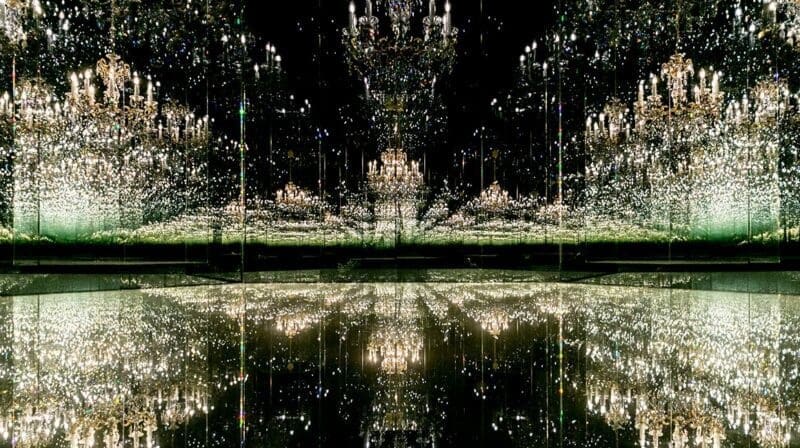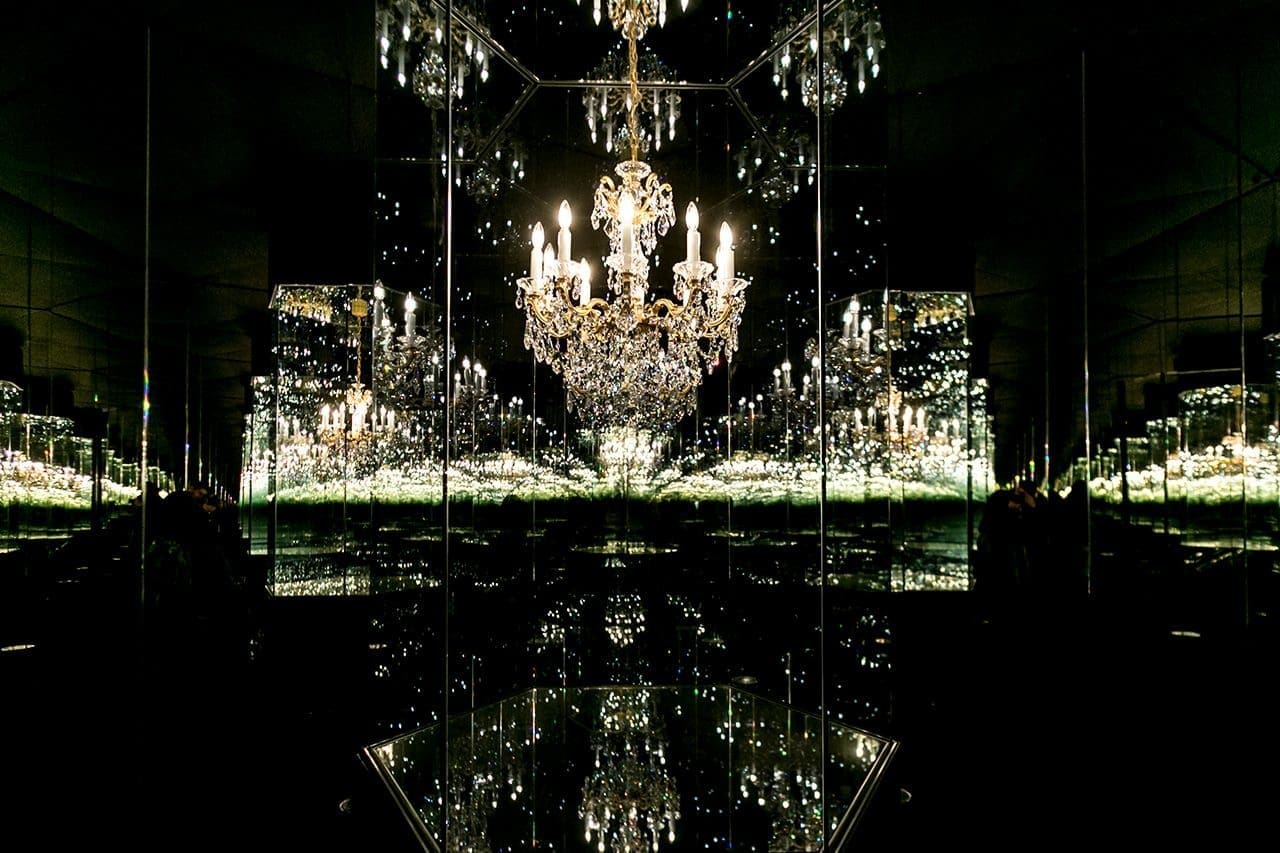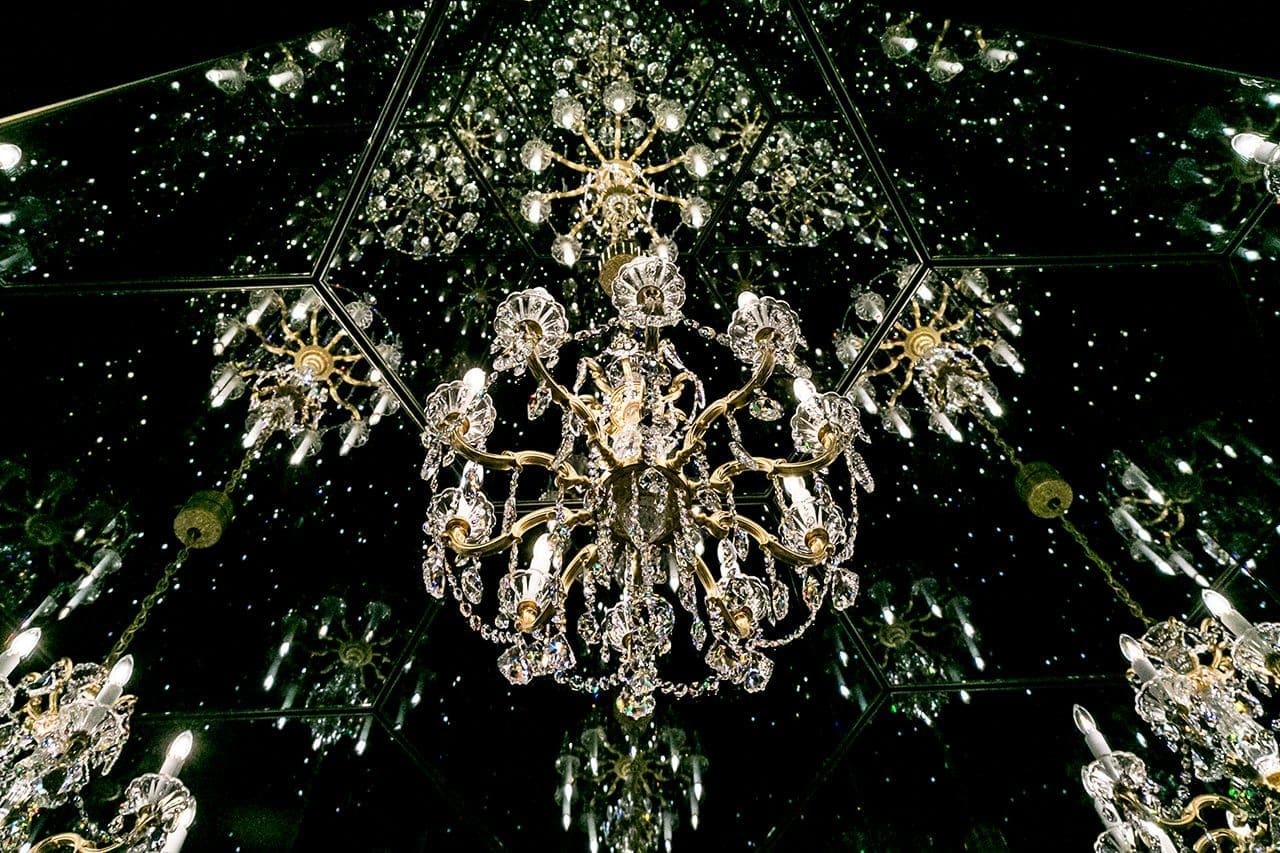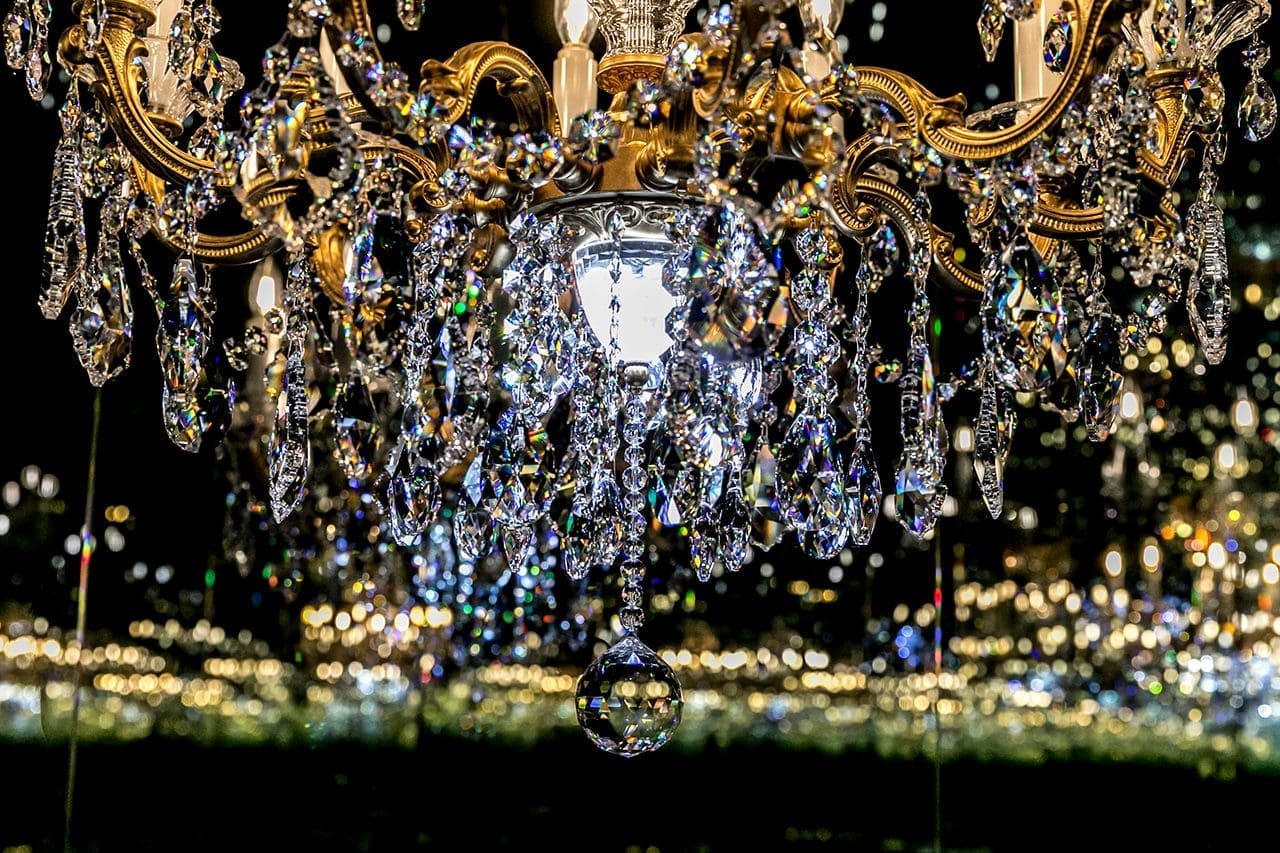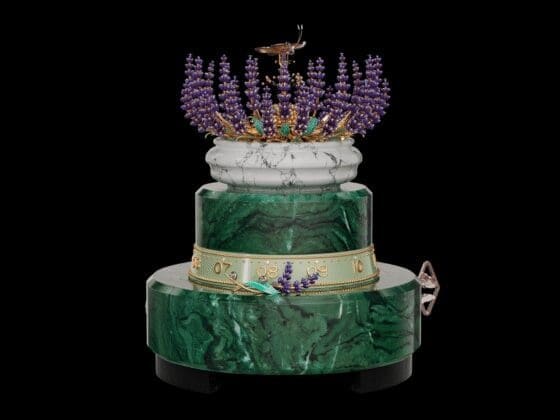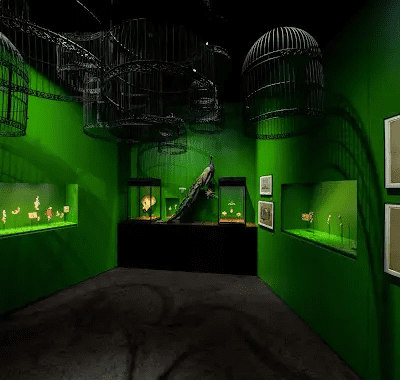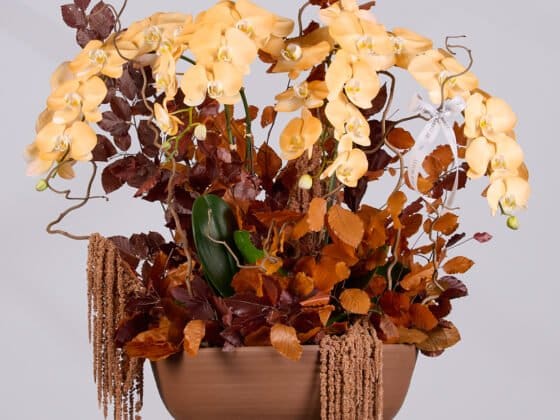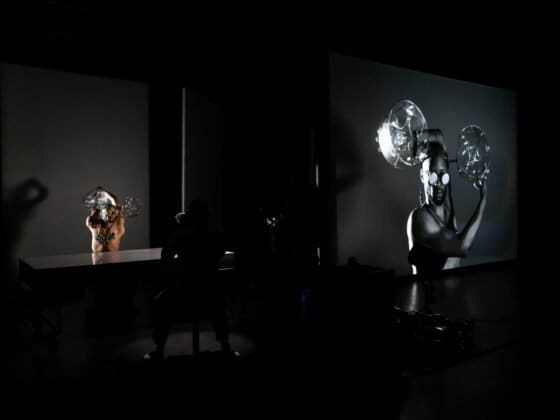Imagine being in a dark three-dimensional space in which a stunning Swarovski crystal chandelier illuminates and infinitely replicates itself in every direction. This fantasy-like world is a material reality made of glittering light and mirrors, and which is capable of transporting the observer into the ethereal. It is called the ‘Chandelier of Grief,’ and it is the result of a collaboration between the world’s most renowned manufacturer of crystals with one of the most gifted contemporary artists of today.
The artist is Yayoi Kusama, whose large-scale solo shows in Mexico City, Rio, Seoul, Taiwan and Chile have attracted more than 5 million visitors over the past few years. The Broad Museum in Los Angeles recently sold 90,000 tickets to her show in a single afternoon. The David Zwirner Gallery in New York restricted the length of a visit to the Kusama installation to 45 seconds. Similarly, visitors to the Hirschhorn Museum in Washington, DC waited in lines surrounding the museum for two hours, because of which they had to impose a time limit of just 30 seconds per visitor.

Kusama’s art has given rise to a selfie trend that does not appear to be slowing down any time soon. Thousands of visitors have taken pictures of themselves in Kusama’s world of wonder, mostly sharing these moments under the hashtags #YayoiKusama and #InfiniteKusama. The artist has expressed her approval of these media interactions, and she sees them as a kind of infinite extension in the digital air. Over the years she has also collaborated with several leading luxury brands.
Kusama was born in 1929 in Japan. She studied in Kyoto and at the Art Students’ League in New York. Between 1958 and 1972, she worked mainly in New York and was very much a part of the youth movements of that time. In that period, she distinguished herself because of her trademark polka dots motif; colourful circles painted on canvases, sculptures and people.
In 1977, Kusama returned to Japan where she voluntarily admitted herself to a psychiatric clinic in her fight to overcome severe depression. She continues to live in the clinic today. She wakes up early every day and leaves the clinic to go to her studio, located across the street, so that she can dedicate herself to her art. In one of her very rare interviews, she revealed that this is the only routine which allows her to create art and she credits it with saving her life.
Kusama has also been researching and optimising mirrored spaces since 1965 which resulted in the immersive installation series called “Infinity Mirror Rooms;” a space format with walls covered in mirrors and arranged in a multitude of different ways to reflect the floor and ceiling endlessly. This concept has undergone continuous development over the years to produce many spectacular visual treats. These ‘Infinity Mirror Rooms’ have been the most attractive of Kusama’s creations.
All of her exhibits are temporary except for those at her gallery in Tokyo which opened in 2017. Now Swarovski Kristallwelten, or Crystal Worlds, has unveiled the only other permanent installation of Kusama’s ‘Infinity Mirror Room,’ a piece titled the ‘Chandelier of Grief’. It is the 17th addition to the ‘Chamber of Wonder’ at Kristallwelten in Wattens Austria. The central element of ‘Chandelier of Grief’ is a rotating chandelier of Swarovski crystal, whose lustre comes to life in a room that is completely lined with mirrors. The installation can be visited year-round.
“When we promise visitors to the Swarovski Kristallwelten that they will experience ‘Temporary Enchantment,’ this new Chamber of Wonder is one step closer to making it a reality, and it does this in a very special way,” as Stefan Isser, the managing director of D. Swarovski Tourism Services GmbH, delightfully notes.
“The new Chamber of Wonder with Kusama’s Infinity Room ‘Chandelier of Grief’ invites visitors to pause for a moment and at the same time creates the illusion of being in an endless space. This sensual and spatial experience has an almost transcendental effect. So, I am all the more pleased that our visitors will be able to enjoy this experience for an unlimited time,” adds Carla Rumler, Cultural Director at Swarovski.
The Swarovski Kristallwelten is a grand, multi-sensory experience of crystal in all its facets spread across more than 7.5 hectares of indoor and outdoor space. It is located at the home of Swarovski in Wattens, in the Tyrol region of Austria. It opened in 1995 to celebrate the company’s 100th anniversary. In its 23 years of existence, this unique destination has attracted more than 14 million visitors making it the second most visited site in Austria.

